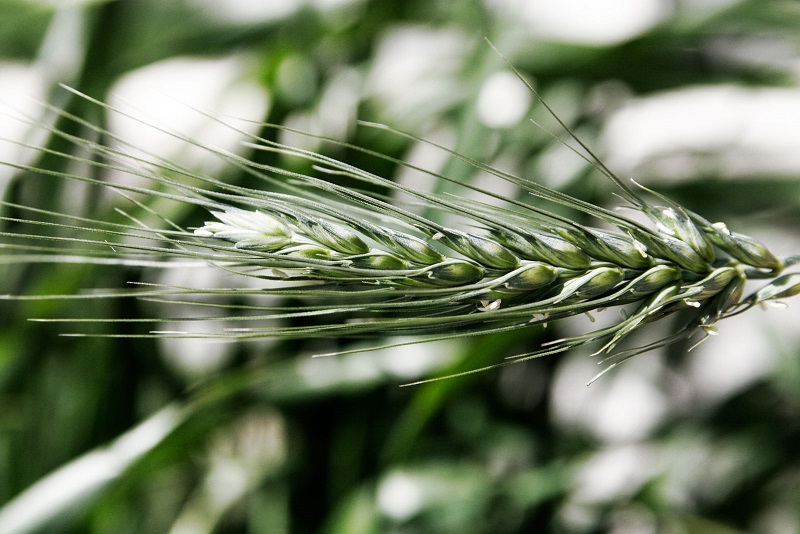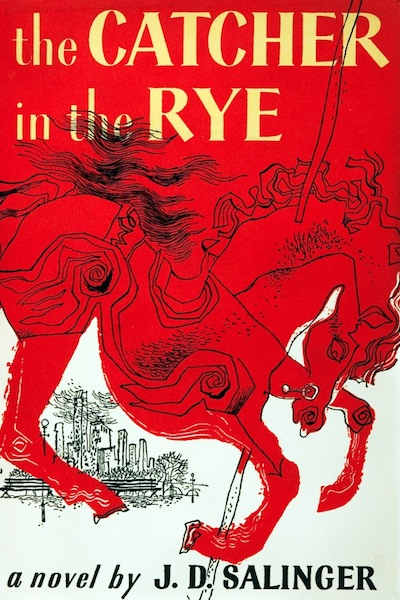Review: The Catcher in the Rye

After being sucked into Holden’s stream of consciousness for the last two days and just now coming up for air, I suppose there are two or three things I’d like to mention.
The goddamn ducks, obviously. The cab driver had it all wrong, and all Holden wanted was a straightforward answer. The mallards that fleck the North American landscape are sensitive to changes in the food supply and model their migratory patterns accordingly, not unlike Homo sapiens prior to the advent of agriculture. For most of their history, humans have hunted and gathered where there was food to hunt and gather, schlepping off to new haunts as the seasons and weather dictated.
It’s not that ducks don’t have the ability to withstand the wintry conditions. Indeed, their thick feather coats serve as nature’s perfect insulators. Rather, they follow the food. During the northeast winter, insects, fish, and aquatic plants like duckweed become scarce as cold temperatures transform the local ecology.
Annual changes in duck concentrations can also provide clues as to the cold conditions from which they flew. A harsher winter will bring more birds south to the Mississippi River Valley, for example, to feed on plants and grass not covered by snow and in open waters not glazed over with ice. Due to the weakening of the polar jet stream brought about by changes in the global climate, we’ve been seeing more ducks nestled along the southern locales of North America in recent years.
That was all probably more than you wanted to know, but if someone had explained this to Holden in grade school it would have been one less thing bouncing around his busily eccentric mind.
Troubled Youth
Which brings us to Holden Caulfield himself and the man who created him. What strikes me about this novel is the nagging question of whether we are glimpsing inside the mind of Salinger or whether Holden is a cold-cloth fabrication. I suppose anything a person writes is a glimpse into their mind in a way, but we are always left to wonder how closely a book’s characters resemble their creator. Is Holden’s brooding disaffectedness a reflection of a lifelong angst and alienation suffered by Salinger?
Salinger was of course the quintessential enigmatic recluse, but that hasn’t stopped commentators from speculating. We know he was born and raised in New York City, that he performed poorly in school — so much so that his father sent him to military academy in Pennsylvania as a last resort — and that he later joined the Army during World War II. Like so many others, the war seems to have had a profound and lasting influence on Salinger, who was hospitalized for nearly a year in Nuremberg. The unauthorized biographer Ian Hamilton suggests Salinger suffered a nervous breakdown in July 1945, which may explain Salinger’s letter to friend Ernest Hemingway in which he mentioned almost being discharged from the Army on psychiatric grounds.
Autobiographical or not, Salinger’s Caulfield is among those rarefied characters who have managed to compel readers for generations. Even those who don’t necessarily connect with Holden tend to find his angst-ridden mirror on society irresistible. I don’t see much of myself in his chronic repining over things big and small, and still I was drawn to him, like a car crash from which you can’t quite look away. The “plot,” if we can call it that, hardly extends beyond the inner recesses of Holden’s mind. Indeed, his vortex of dread and relentlessly wry running commentary is the plot. He’s the directionless teenager we all love to hate, and I think it’s because wrapped up in Holden’s embittered, existentialist essence is a version of our past or present selves we can’t help but identify with.
I sincerely wanted Holden to course-correct and not let his overpowering discontent get the better of him. Maybe he would have been better off with a healthy dose of SSRIs and some counseling, or perhaps — given the subversionary role reversal in which he and his sister Phoebe are engaged in the closing section — he just needed to see himself from the outside looking in.
The Streisand Effect
I dug around a bit trying to find out why I didn’t read this book in high school like everyone else. As it turns out, The Catcher in the Rye is one of the most censored books in U.S. history, which would certainly explain its absence from the reading list at the ultraconservative Christian school I attended. Apparently Holden’s rebellious nature was (and still is) thought to be too infectious, his vocabulary too potty-mouthed, and the sexual references too saucy. Atheism also pops up sparingly, with Holden self-identifying as an atheist and attributing the label to his brothers as well. Alas, it’s safe to assume this numbered among the reasons many a school board fought for its proscription.
Of course, the Streisand effect all but guarantees that banning a work of art will only catapult its status far higher than it may otherwise have achieved. In any case, Salinger’s best-known work is no worse for the wear, and excels in its own right. The frosty Holden is as captivating as he is cynical, and his penchant for slang and low-brow humor make for easy reading. It might have taken me longer than most to read this literary classic, but it was well worth the wait.
Note: This review is mirrored over at Goodreads and at Amazon.
Feature image credit: Fir0002/Flagstaffotos via Wikimedia



Comments